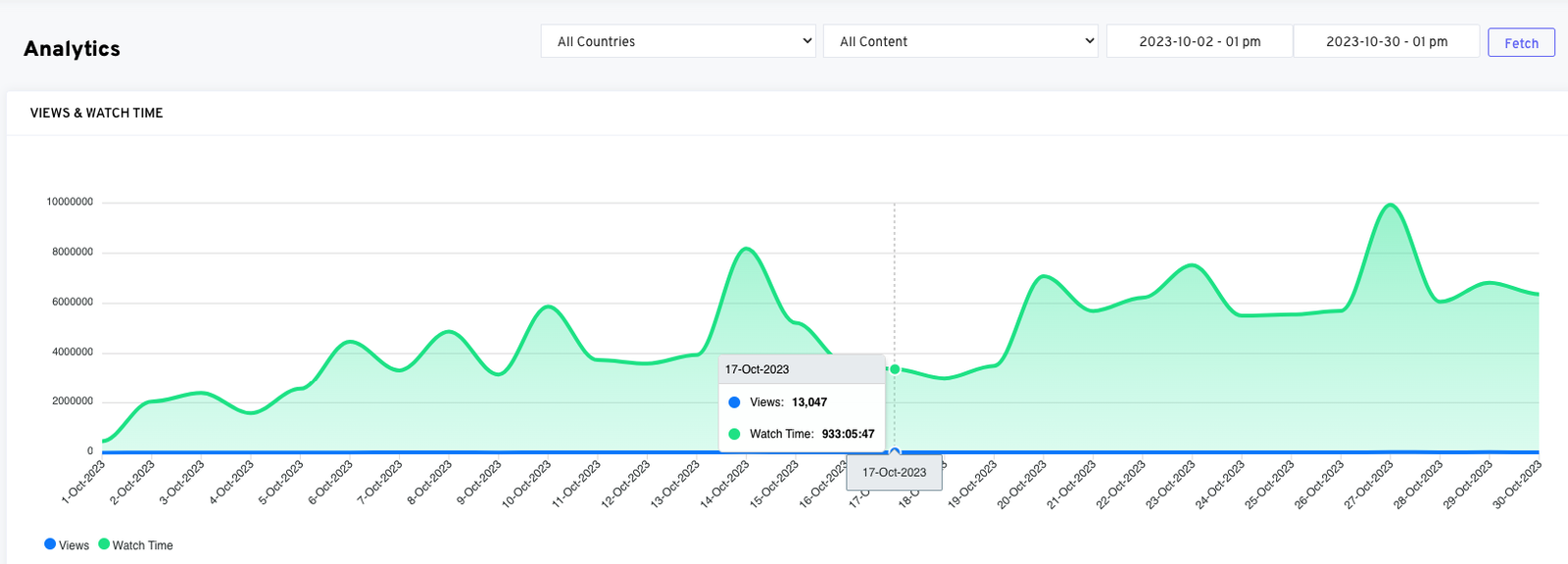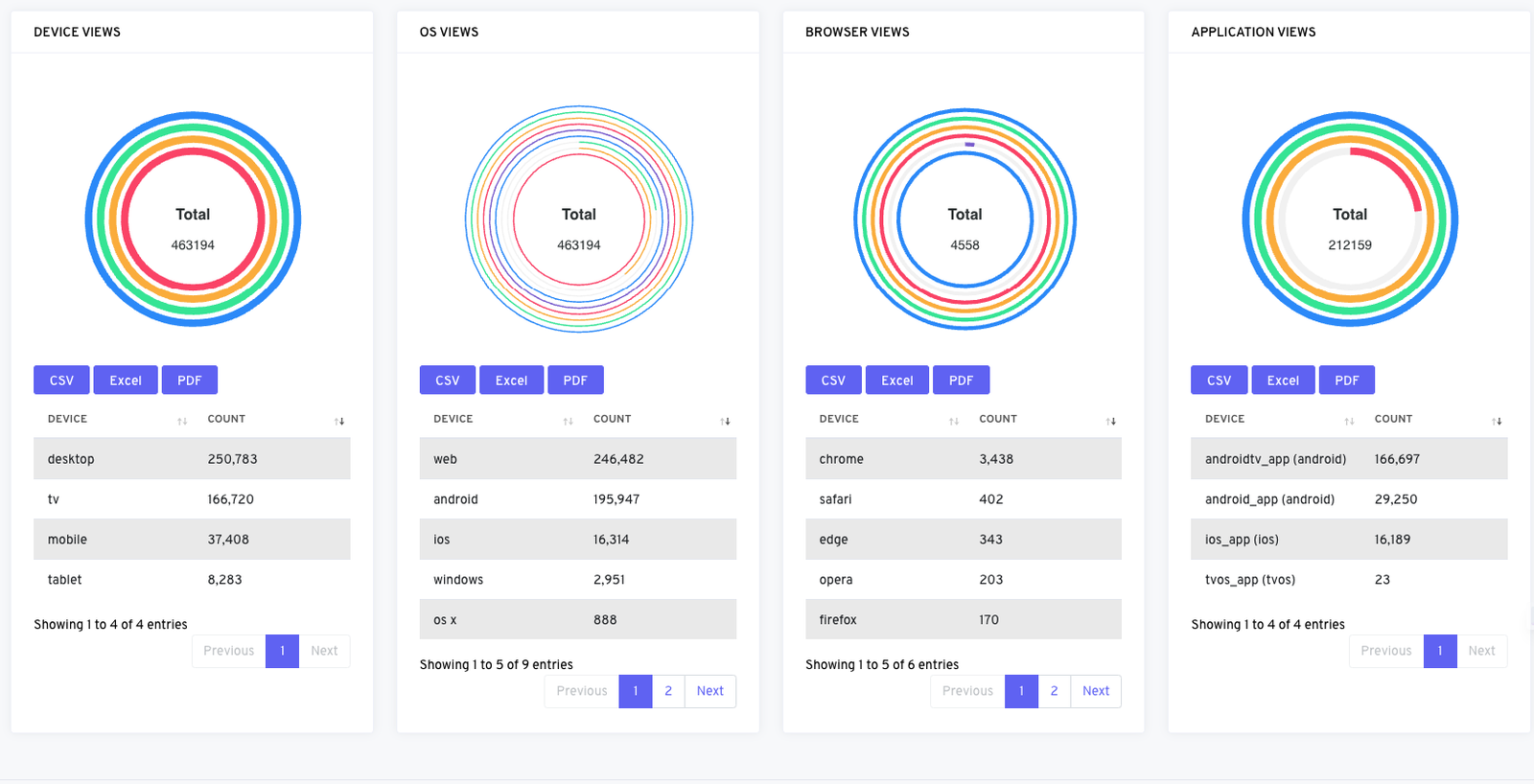Integrating online video capabilities, including live streaming, into a custom app involves several steps, from choosing the right technology and server infrastructure to ensuring the content is delivered smoothly to end-users. Here's a comprehensive guide to help you integrate such functionalities:
Determine Your Requirements
Content Type Specification
Identify the nature of the content to be offered – live streaming, on-demand video, or a blend of both to tailor your platform accordingly.
Audience Size and Concurrent Viewers
Define the scale of your anticipated user base and estimate the number of simultaneous viewers you expect to accommodate at peak times.
Geographical distribution of your audience
Consider the geographic locations of your audience to ensure efficient content delivery across diverse regions, helping select the appropriate content delivery networks (CDNs)
Monetization strategies
Determine the revenue model: subscriptions, advertisements, pay-per-view, or a combination, enabling you to integrate the suitable payment infrastructure and engagement tools.
Choose the Right Technology
SDKs & Libraries
ExoPlayer for Android: A versatile video player SDK for Android applications.
AVPlayer for iOS: Apple's native media player for iOS apps.
Video.js for web apps: An open-source video player framework that works across various web platforms.
Frameworks & Platforms
WebRTC: Facilitates real-time communication, particularly useful for live streaming purposes.
FFmpeg: A comprehensive toolset ideal for processing video and audio content, enabling functions like encoding, decoding, and streaming.
Backend Infrastructure
Media Servers: Required for broadcasting and streaming the content. Examples include:
Wowza Streaming Engine: A unified streaming media server software.
Red5 Pro: Offers real-time streaming solutions.
Nginx with the RTMP Module: can be set up as a dedicated streaming server.
CDN (Content Delivery Network): A network of servers that deliver content based on the user's geographical location. Popular choices include:
Akamai.
Cloudflare.
Amazon CloudFront.
Integration
Integrate the chosen SDK or library into your mobile or web app using the provided documentation.
Set up your media server (if you're self-hosting) or choose a BaaS (Backend as a Service) solution that provides video streaming capabilities.
Connect your app to the server using the appropriate protocols (e.g., RTMP, HLS).
Security & Monetization
DRM (Digital Rights Management): Protect your video content from unauthorized access and distribution. Popular choices include Widevine (Google), FairPlay (Apple), and PlayReady (Microsoft).
Authentication & Authorization: Integrate user management systems to control who can stream or view content.
Implement monetization strategies like subscription models, in-app purchases, or ad integrations.
User Experience
Adaptive Bitrate Streaming (ABR): Automatically adjusts video quality based on the viewer's internet connection.
Analytics: Integrate analytics tools to gather insights on viewer behavior, popular content, and potential areas of improvement.
Interactive Features: Add features like chat, comments, or reactions to enhance user engagement during live streams.
Testing
Deployment & Scaling
Once everything is set, deploy your app.
Monitor usage, and as your user base grows, scale your infrastructure accordingly, whether it's upgrading your server or expanding your CDN coverage.
Remember, the quality of the streaming experience directly affects user satisfaction. Ensure you have a robust infrastructure and offer a seamless user experience, especially during live events where many users might be watching simultaneously.
How to Build Live Video Websites
Responsive User Interface
A design that works seamlessly across desktops, tablets, and mobile devices.
Real-time Streaming Protocols
Support for protocols like RTMP, HLS, and WebRTC to ensure smooth live streaming.
Adaptive Bitrate Streaming
Adjust video quality automatically based on viewers' internet speed to provide the best possible experience.
Chat & Interaction Tools
Allow viewers to interact in real time during live streams, fostering community engagement.
Monetization Options
Business models such as pay-per-view, subscriptions, or ad integrations for generating revenue.
Content Security
Implement Digital Rights Management (DRM) to prevent unauthorized access and distribution.
Analytics Dashboard
Track viewership metrics, such as the number of viewers, their geographic locations, and engagement levels.
Archiving Capabilities
Store past live streams for on-demand viewing later.
Content Management System (CMS)
A system to organize, categorize, and manage videos easily.
SEO & Social Media Integration
Features that ensure your live streams are discoverable via search engines and shareable on social media platforms.
User Registration & Profiles
Allow users to create profiles, save their favorite streams, and personalize their viewing experience.
CDN Integration
Connect with Content Delivery Networks to ensure speedy video delivery worldwide.
Try Vodlix, it's not just about streaming. It's about crafting an unforgettable viewer experience. From customizable interfaces to adaptive streaming, ensure your audience gets the best, every time.
White-Labled and Customizable Solution
In today's digital age, video content is king, but not every company has the resources or expertise to develop a comprehensive video streaming platform from scratch.
A white-labeled solution empowers businesses to launch their video streaming service under their brand, with their logo, colors, and identity.
With such a solution, businesses can tailor it to fit their specific needs, audience preferences, and market niches. This adaptability ensures that each platform powered by a customizable solution retains a unique touch, making it stand out from competitors.
Best Video Live Streaming Solutions
1. Vodlix
Price Point: Starts at $360/month
Highlights: Offers a range of features from Video API to customizable branding on all plans. A solid choice for businesses looking for a comprehensive solution. Represents excellent value for money.
2. Dacast
IBM Cloud Video
Price Point: Plans range starting from $999/month.
Highlights: High-end pricing with some features limited to custom plans. White-label solutions start at a lower price point of $499/month, but customization can be costly.
3. Livestream
Price Point: Starts at $75/month for embedding, with other features on custom plans starting at $999/month.
Highlights: Offers a decent range of features, but lacks mobile SDKs, making it less ideal for those targeting mobile viewers.
4. Ooyala
5. Vimeo Live
Price Point: Starts at $75/month.
Highlights: Provides a range of features at a competitive price point. Mobile SDKs have limited availability, but most other features are inclusive across all plans.
In conclusion, the best solution depends on individual business needs, target audience, and budget constraints. Some platforms offer more affordable rates, while others may have specialized features with custom pricing. It's essential to evaluate each based on the specific requirements of your project or business. If you'd like a more in-depth analysis, consider diving into detailed reviews or consulting a video streaming solutions comparison guide.
Unlike many platforms, Vodlix offers a genuinely white-labeled experience, allowing you to immerse your audience in a platform that's uniquely yours. With unparalleled customization options, Vodlix ensures that your streaming platform reflects your brand perfectly, setting you apart from the competition. Stand out in a crowded market with Vodlix, the ultimate streaming solution. Sign-up for Vodlix 14-day free trial now!

.png)



.png)


